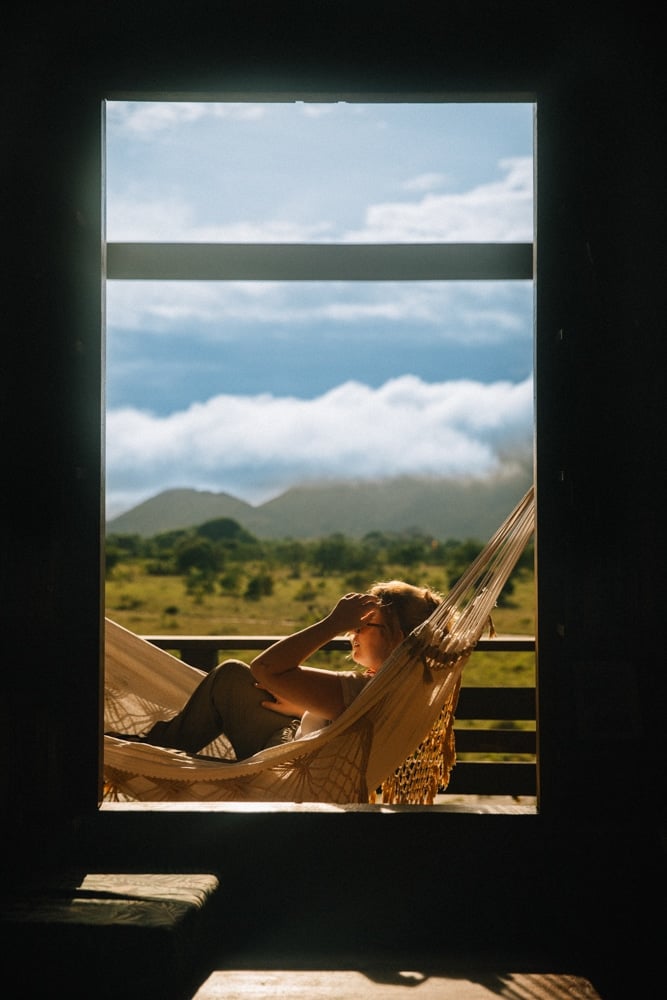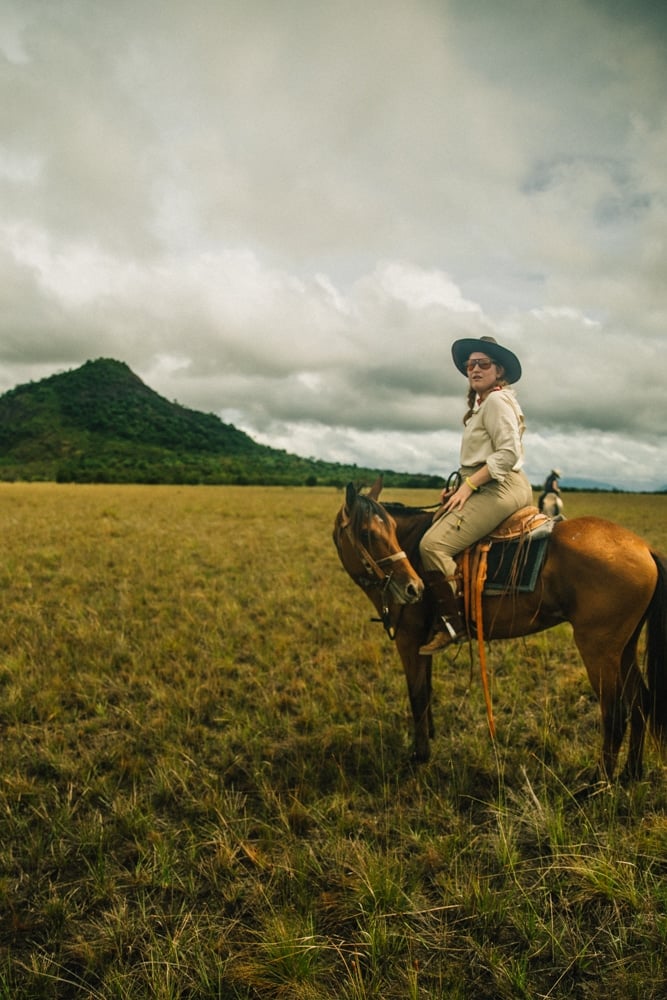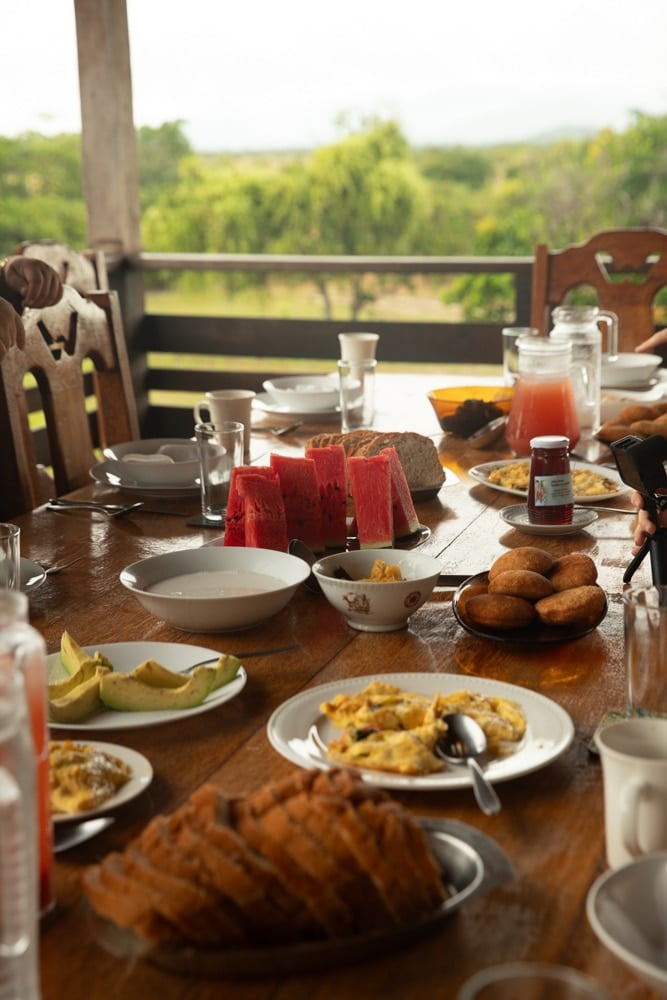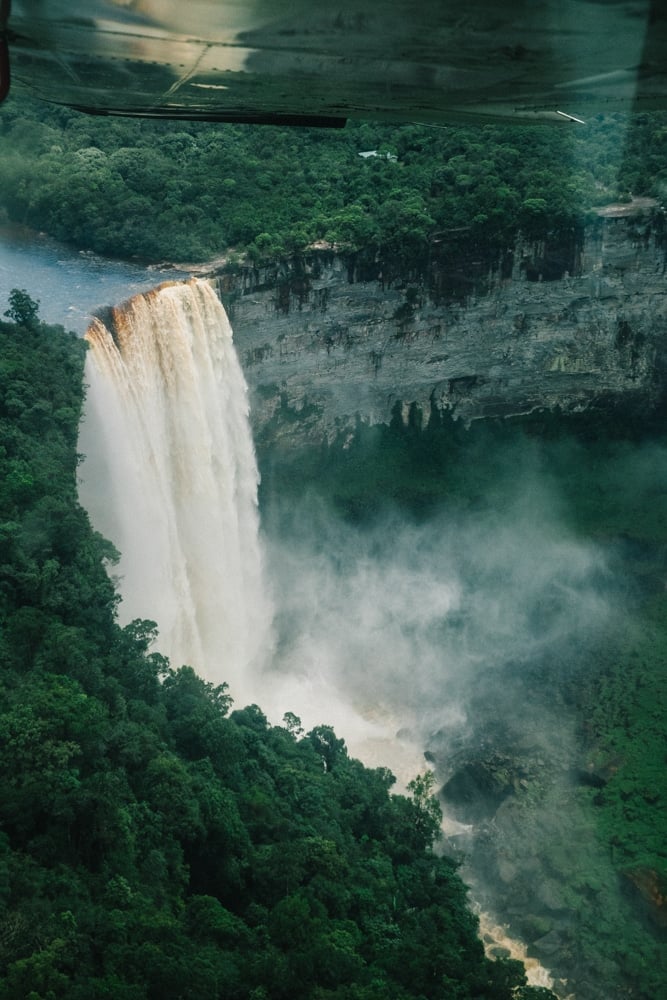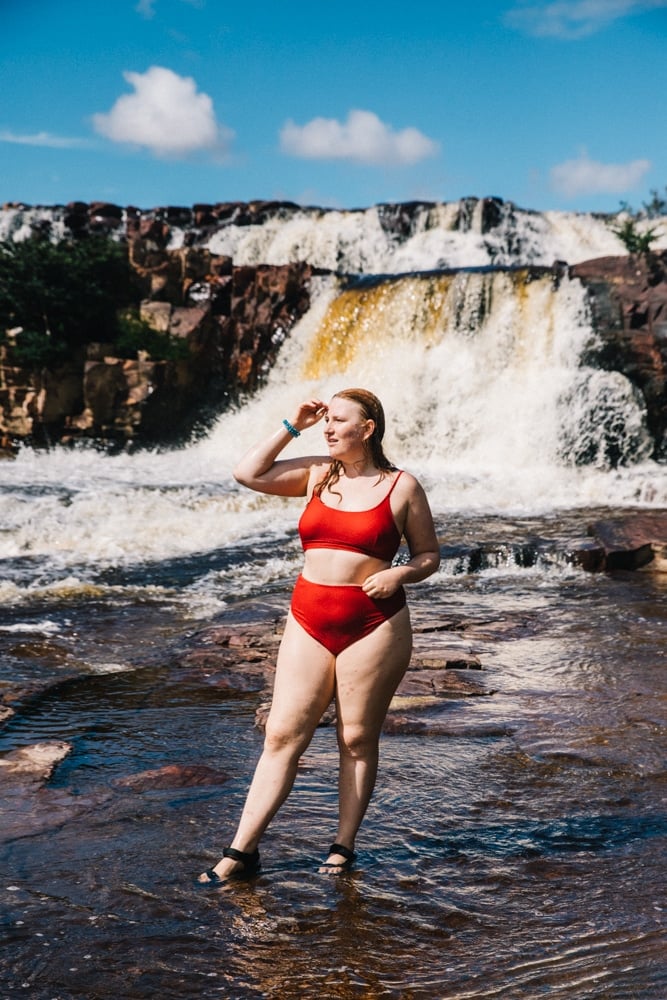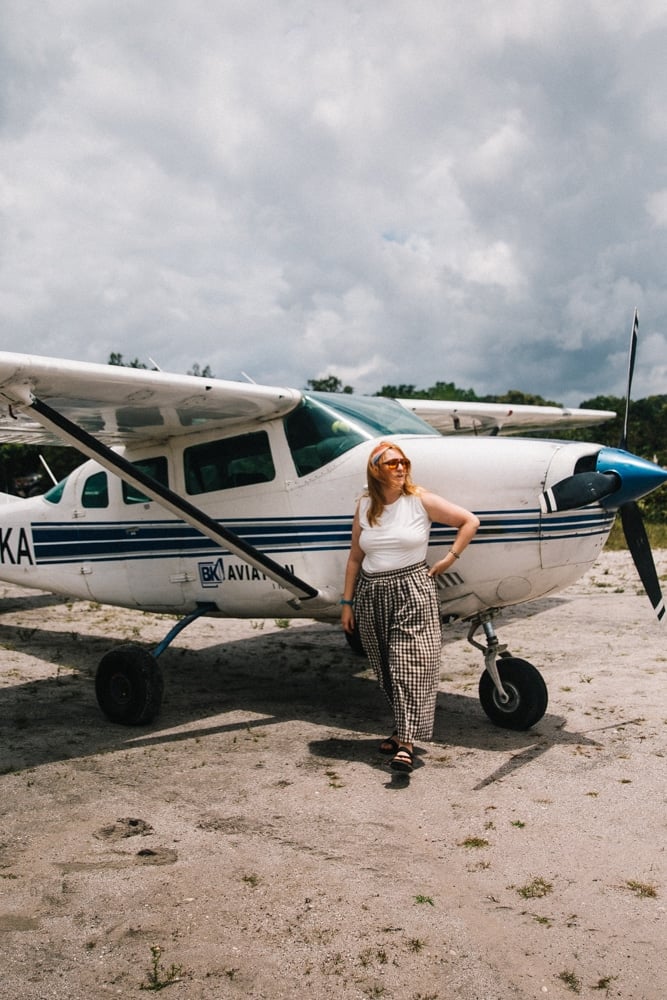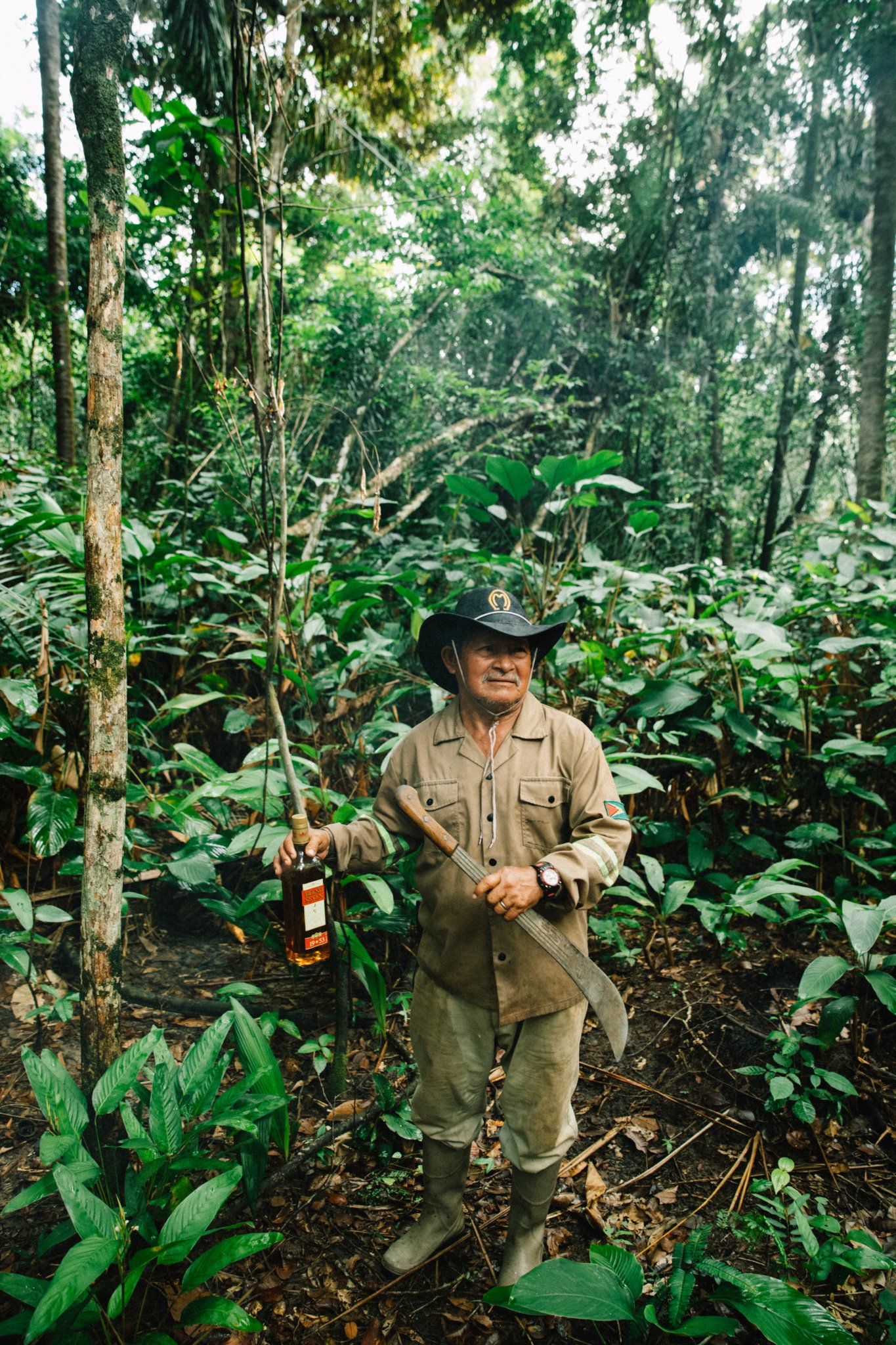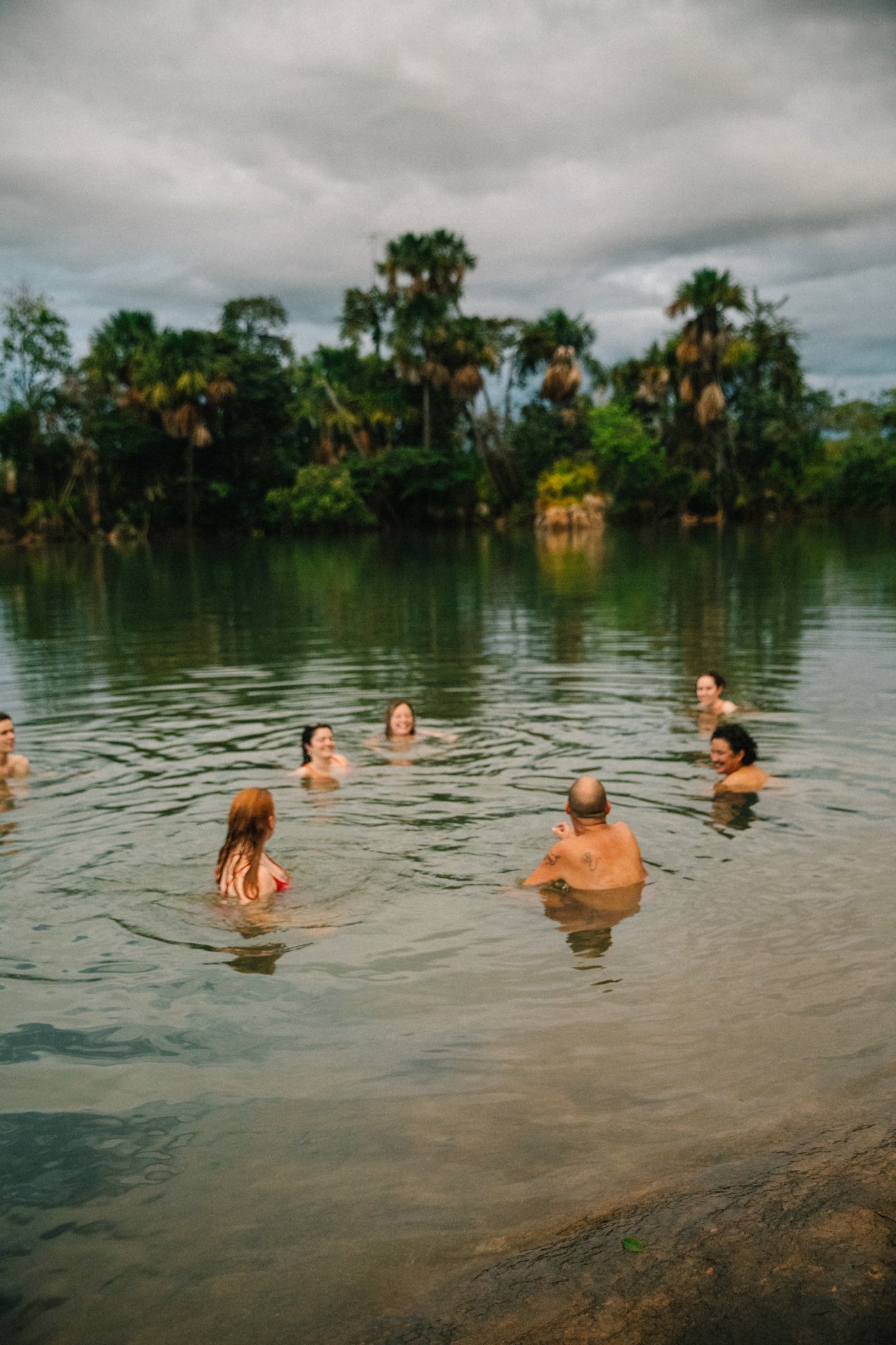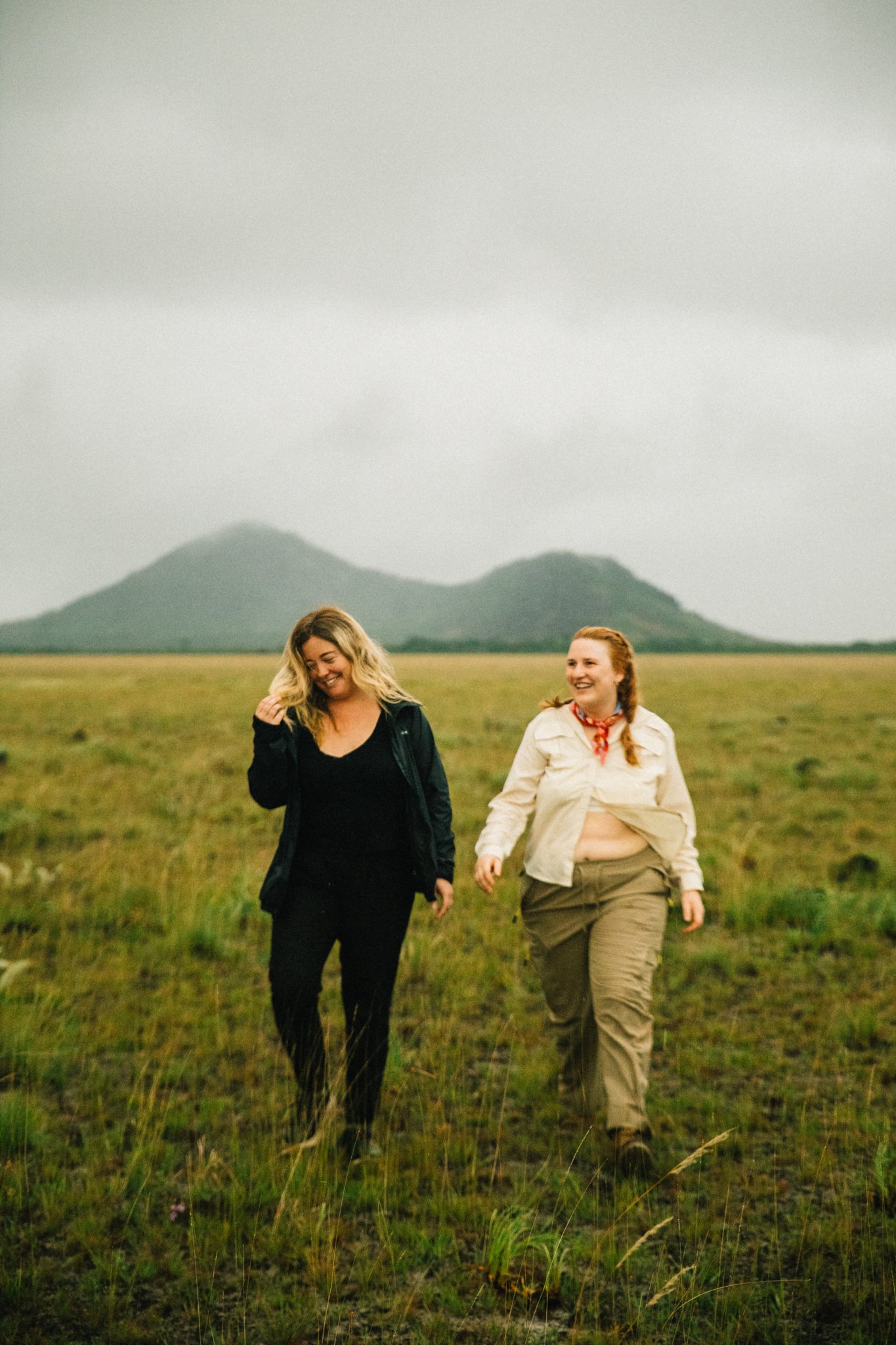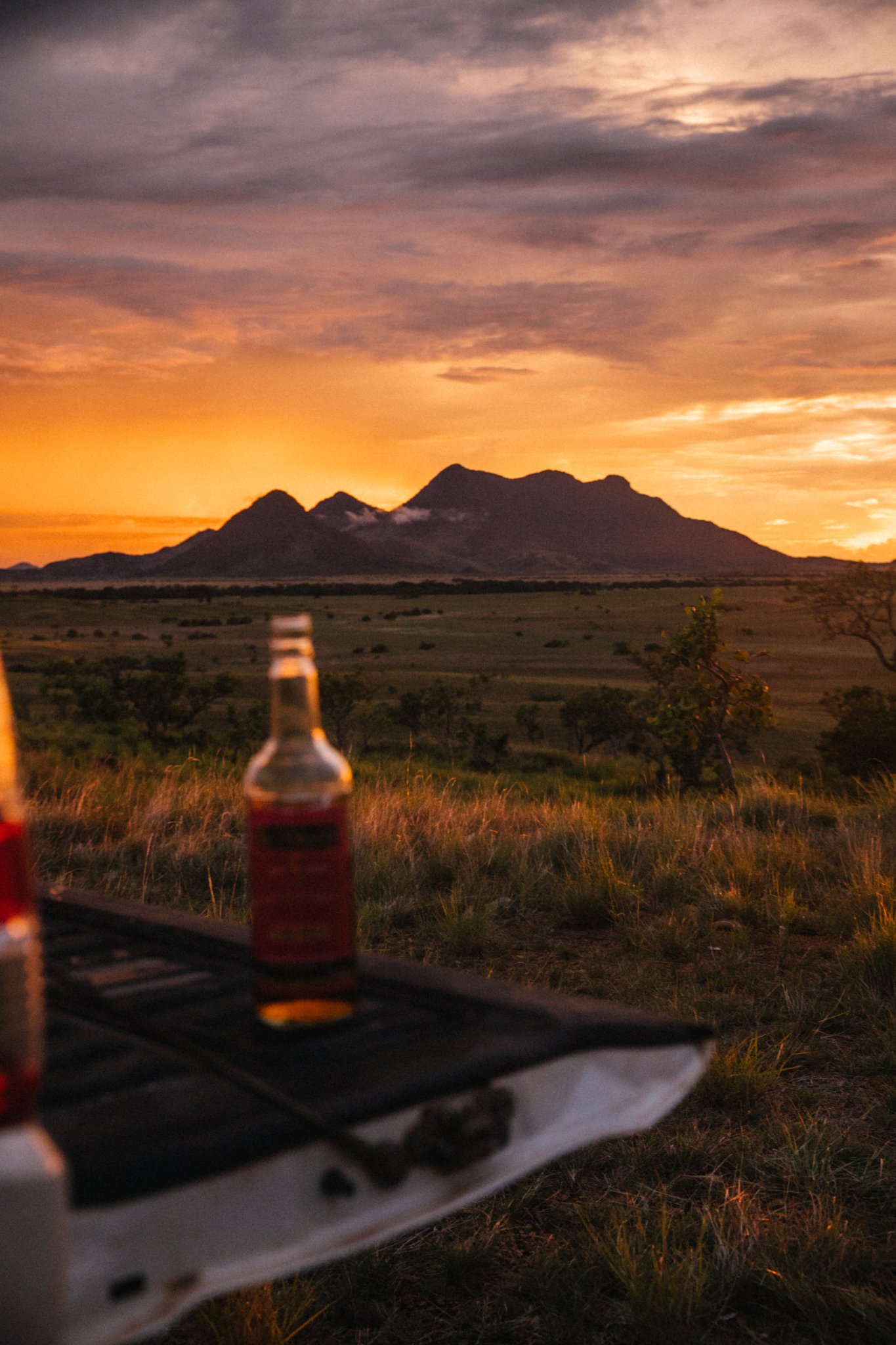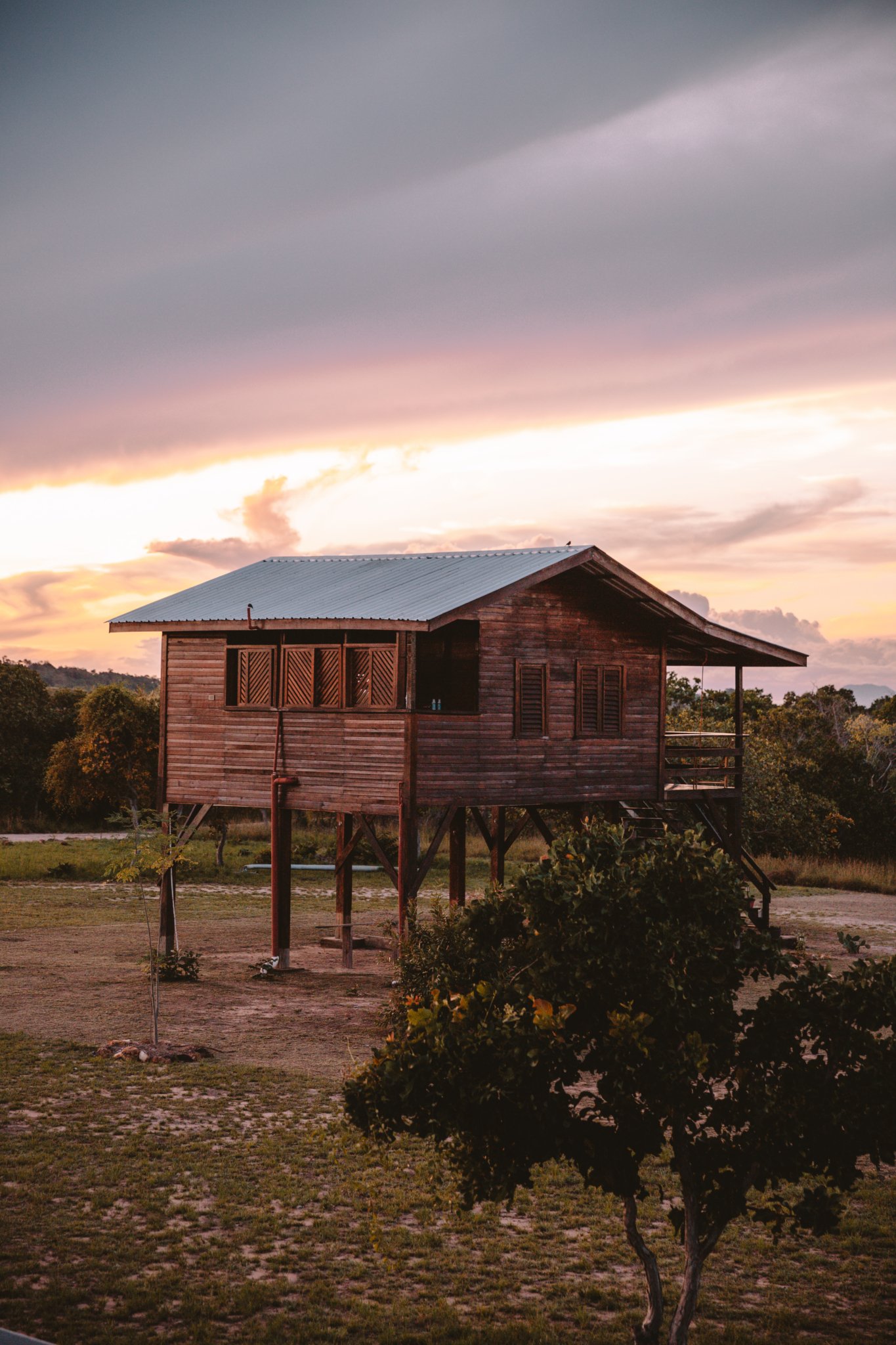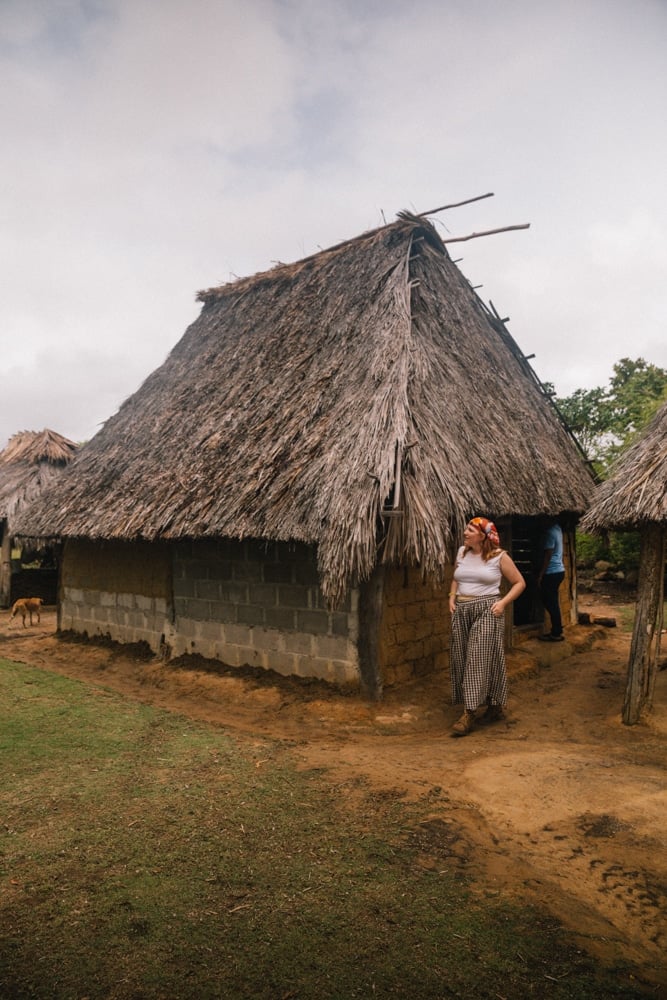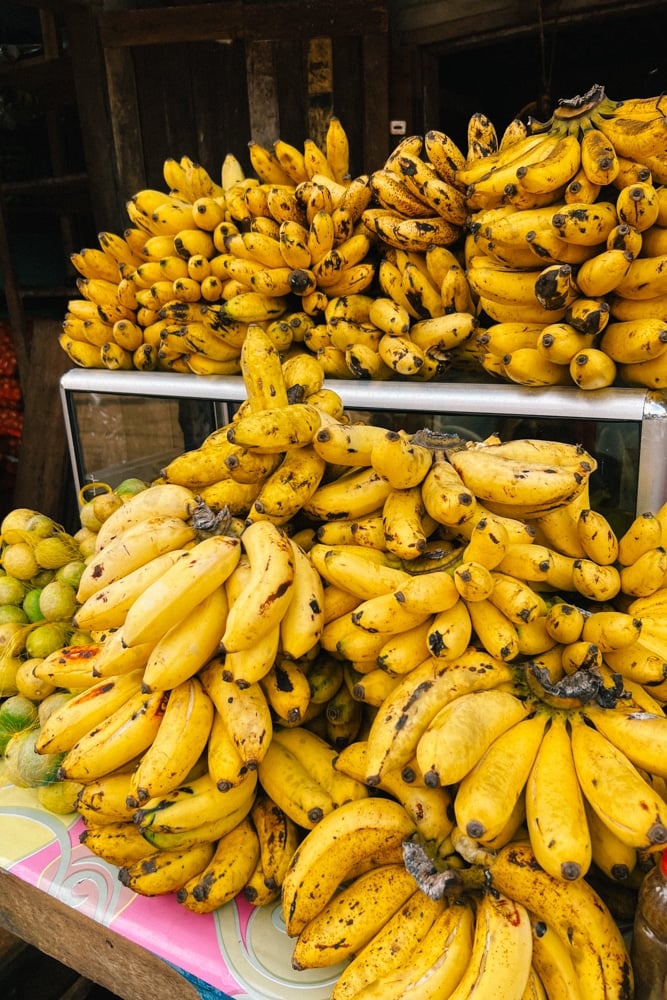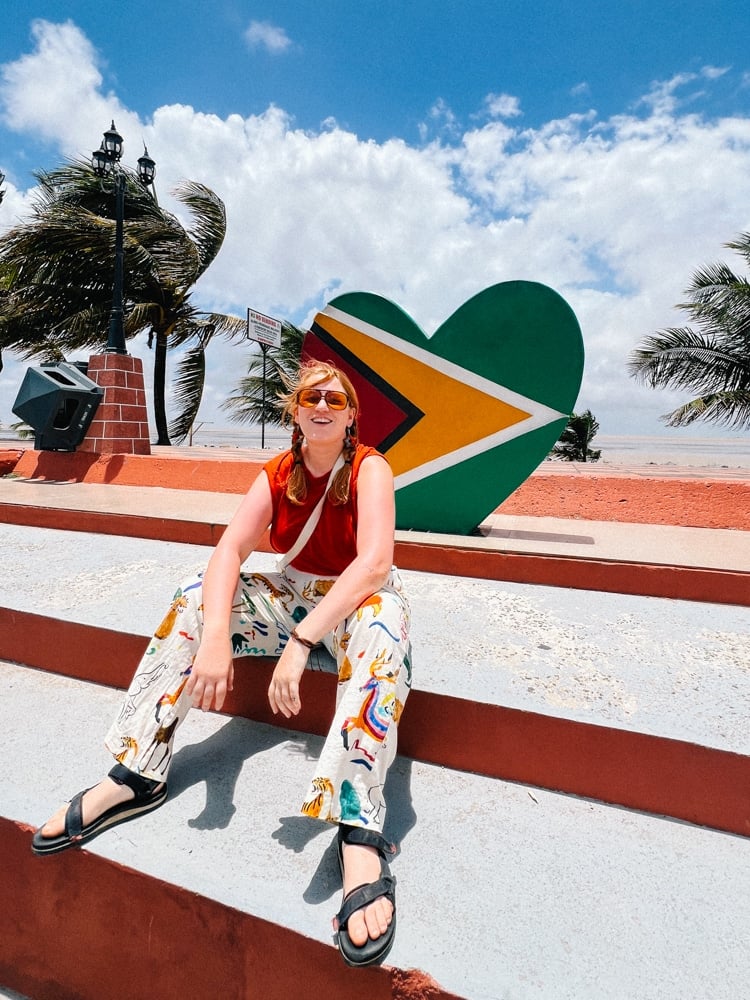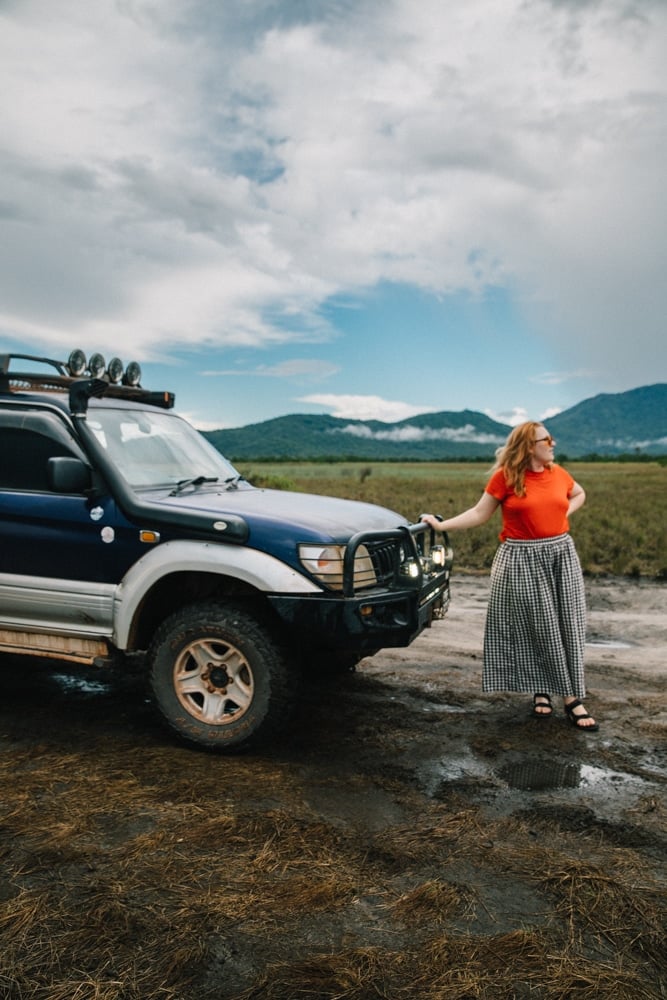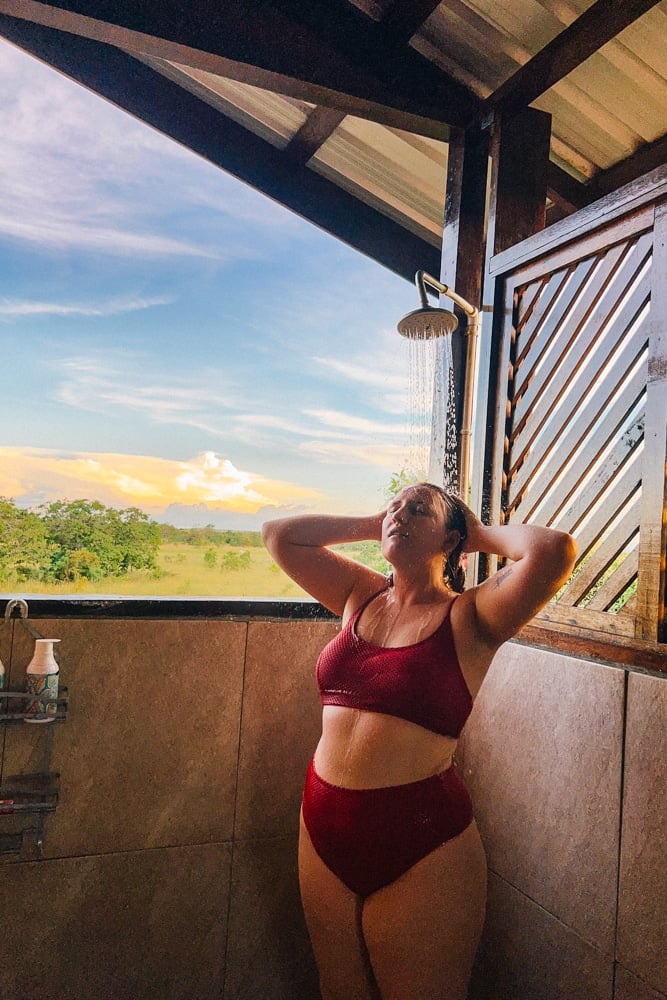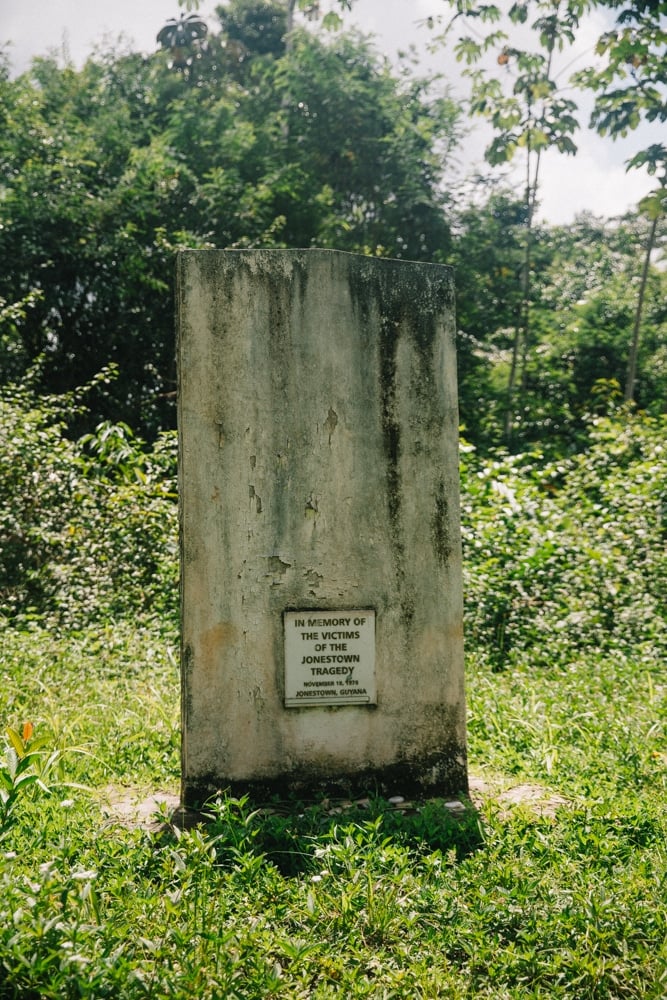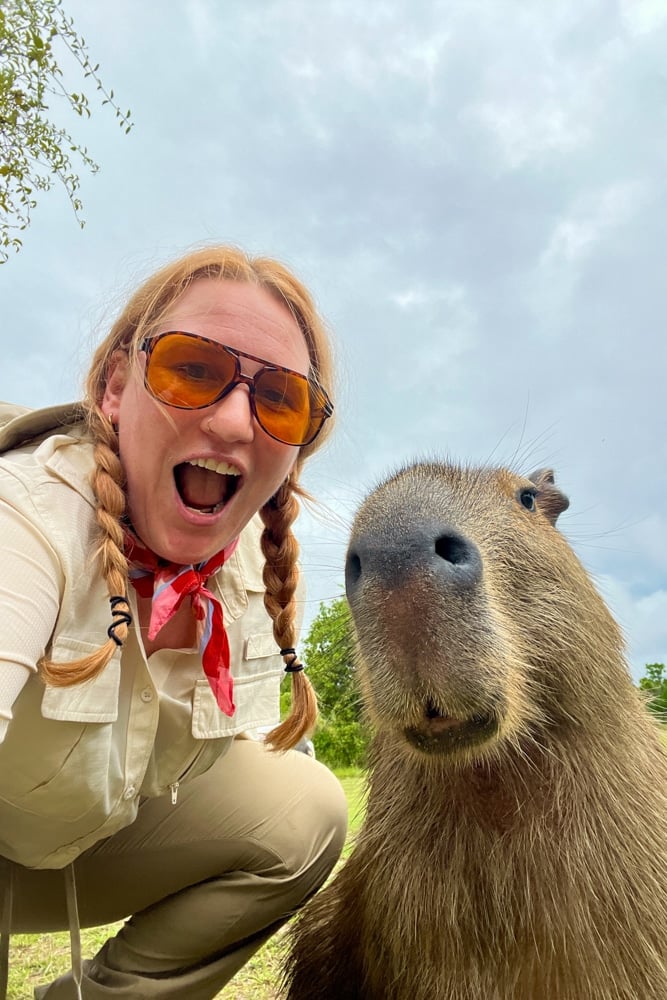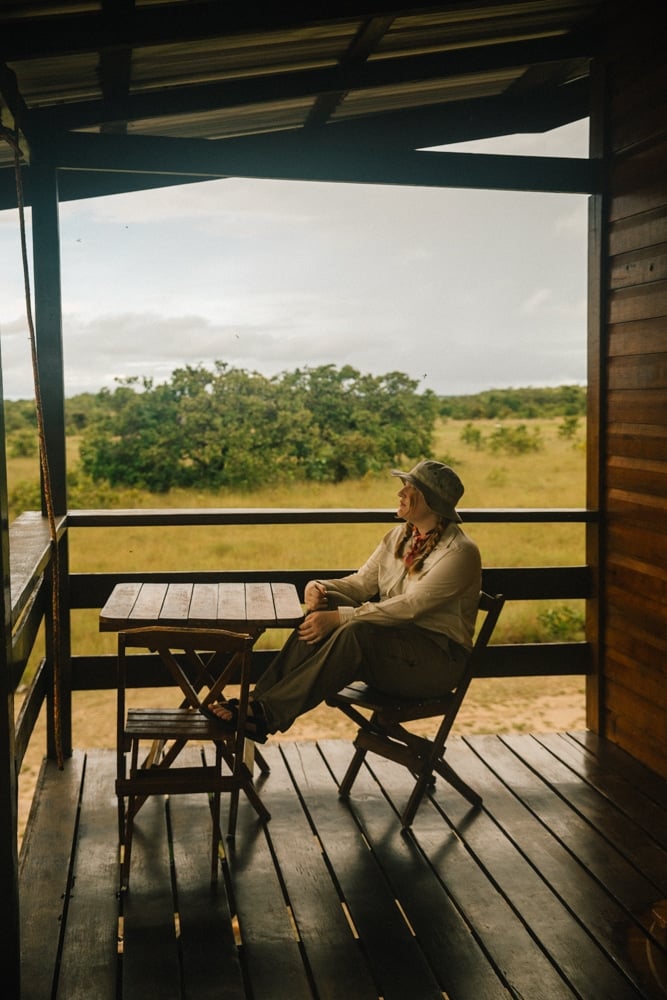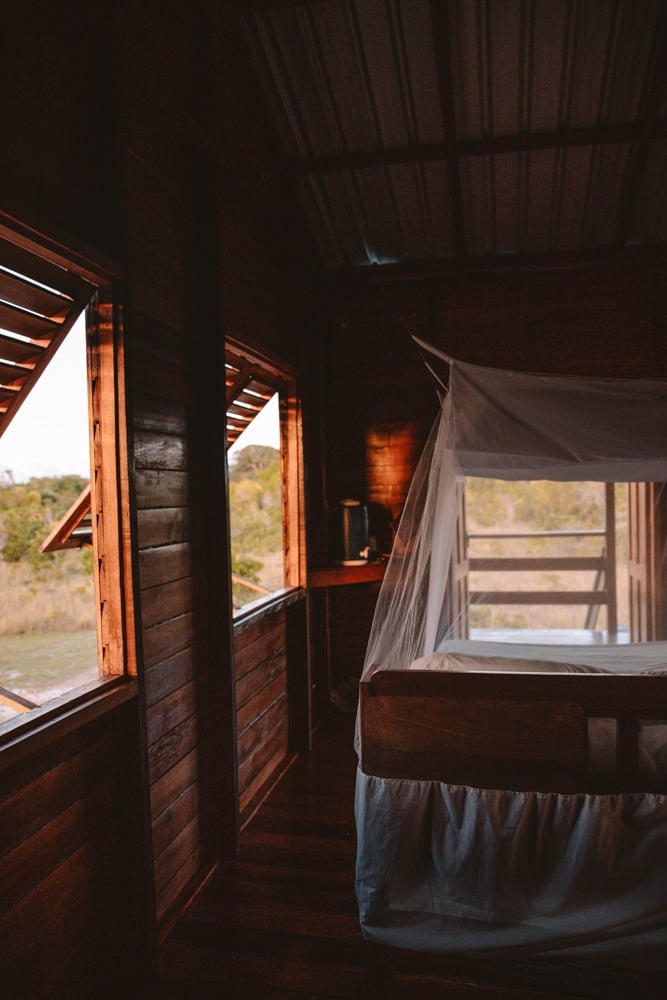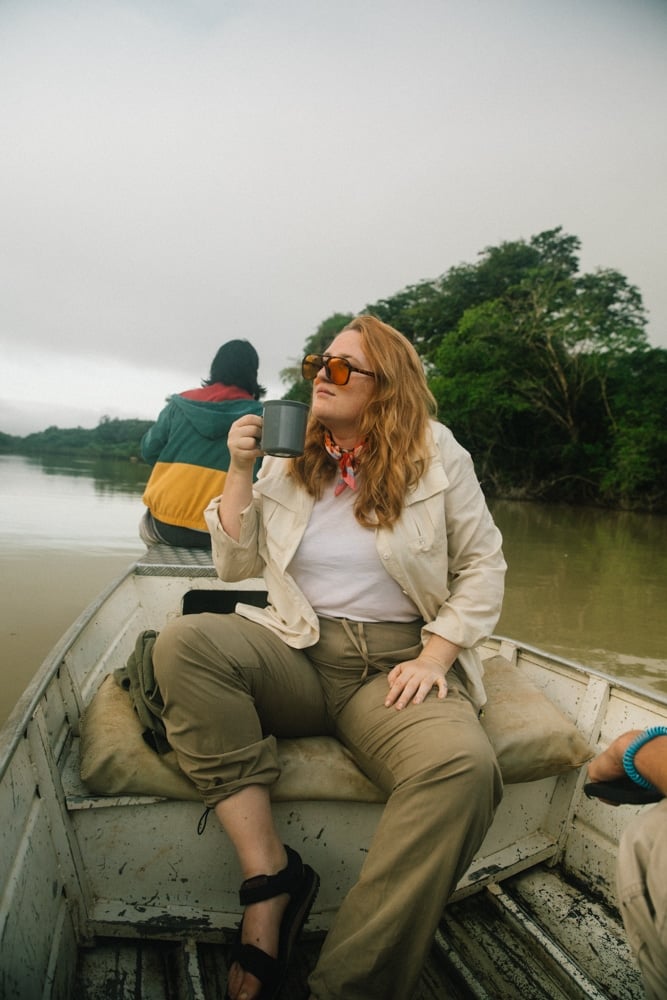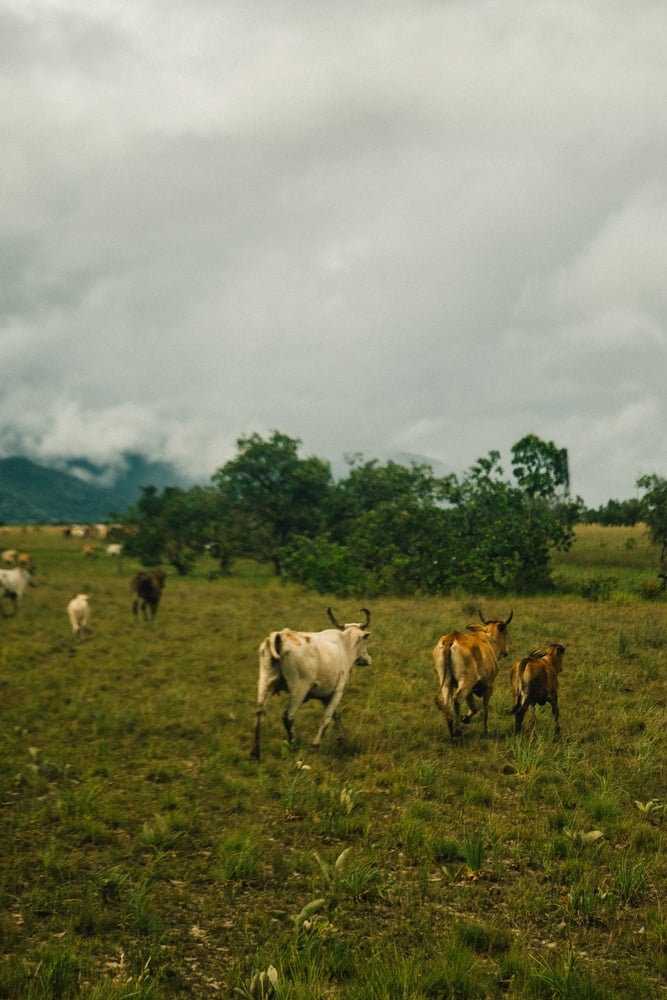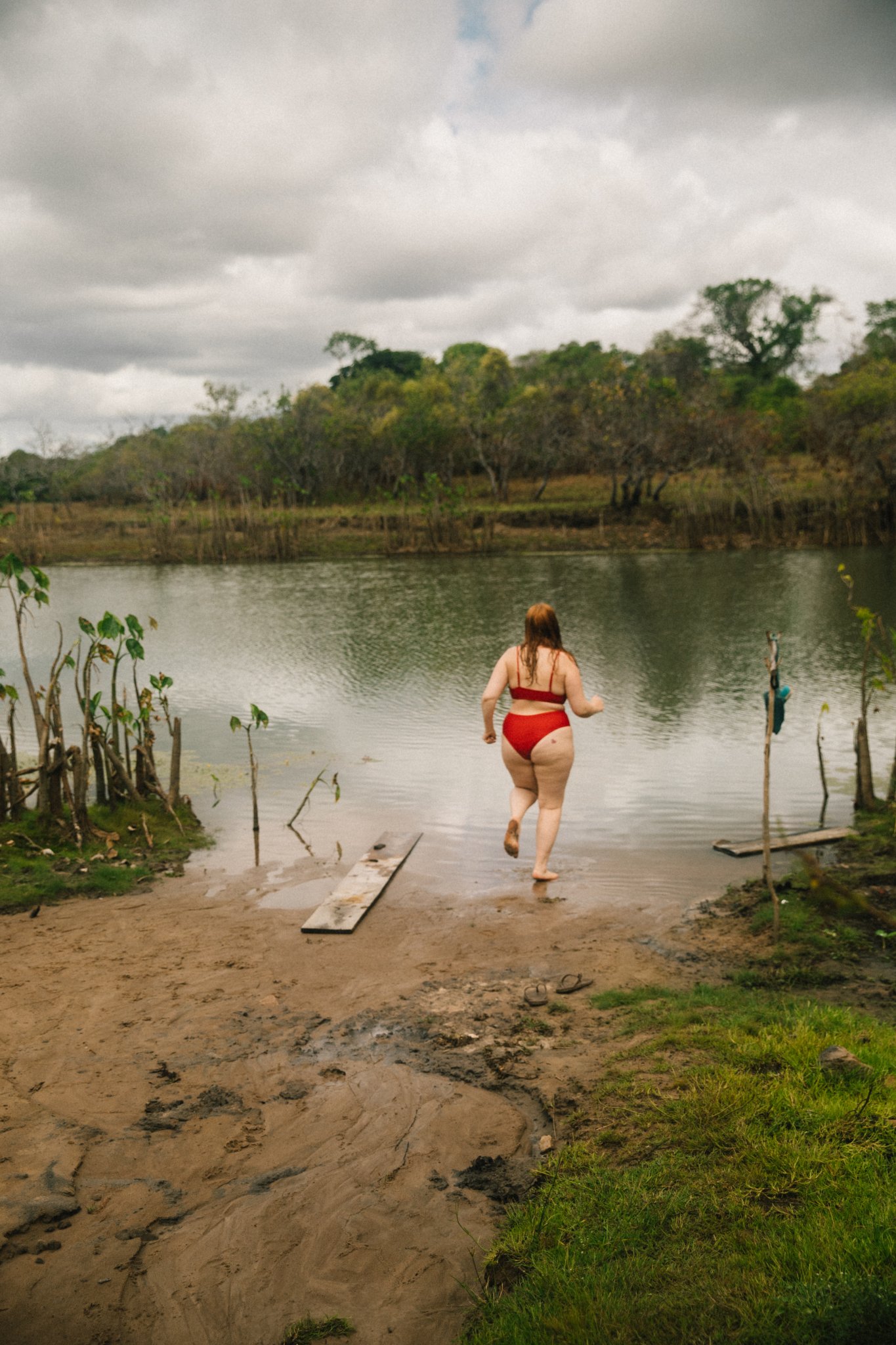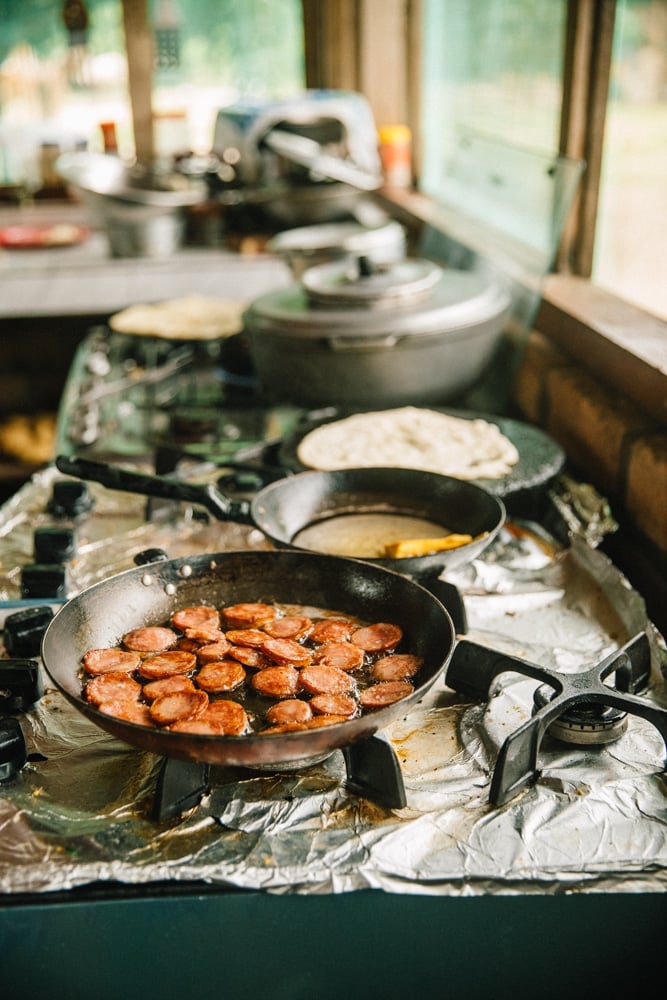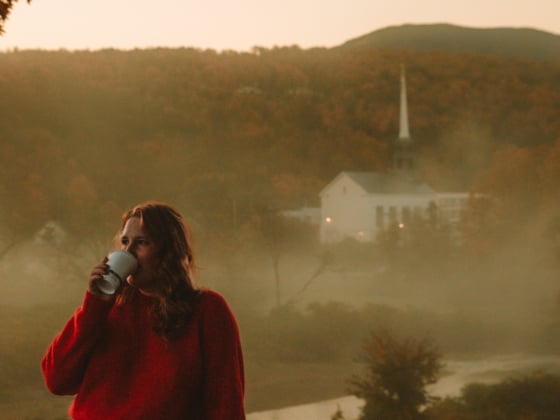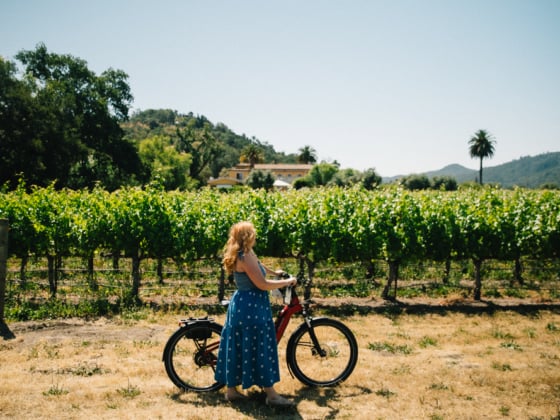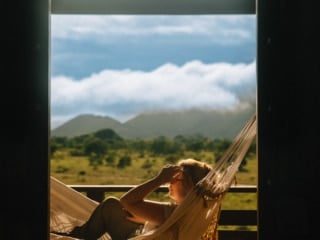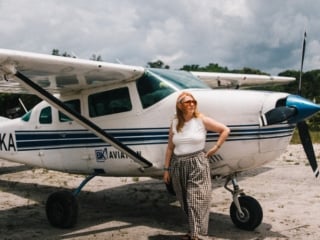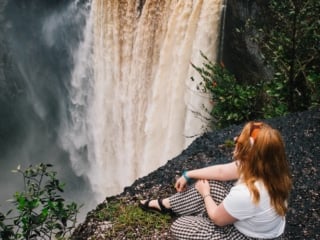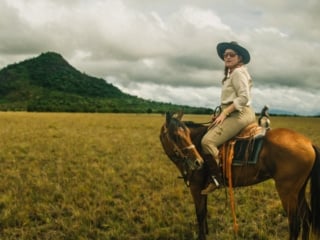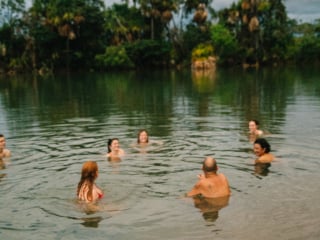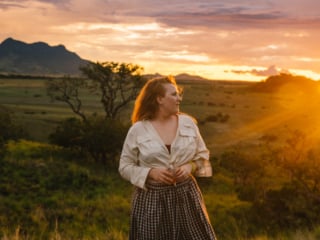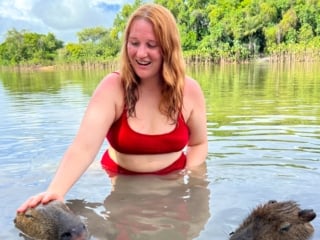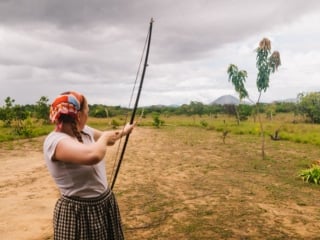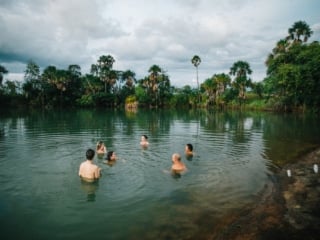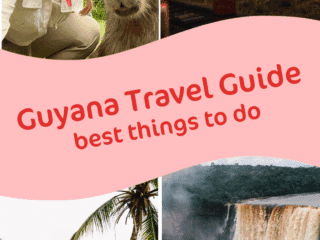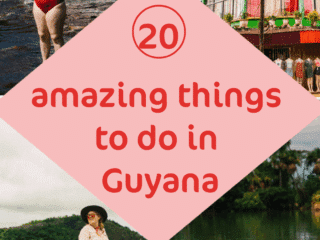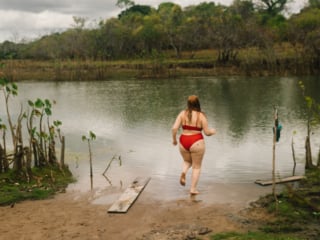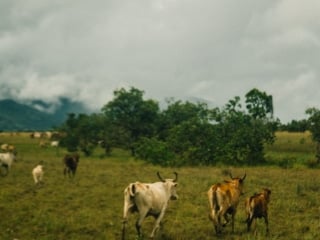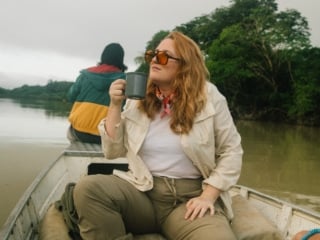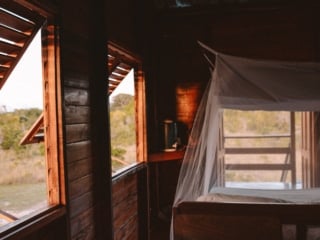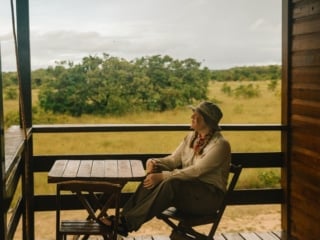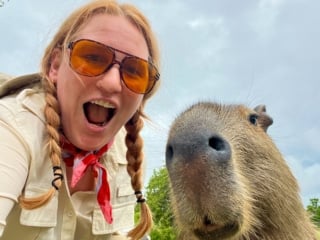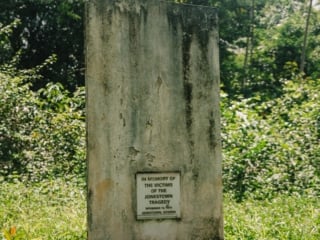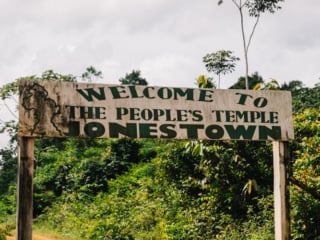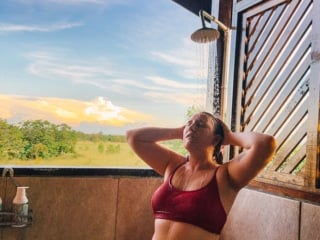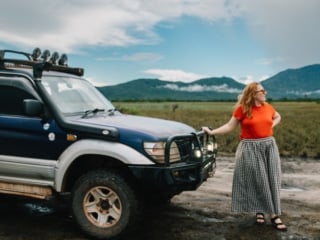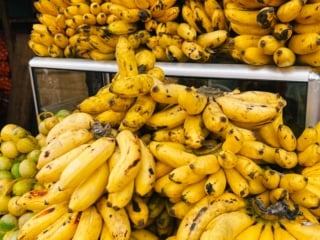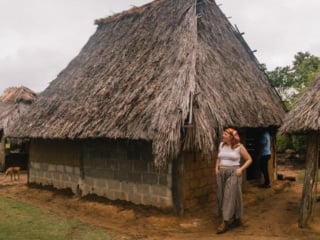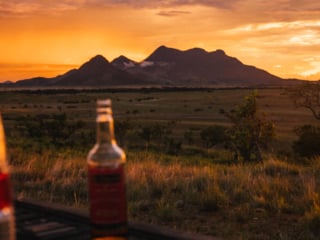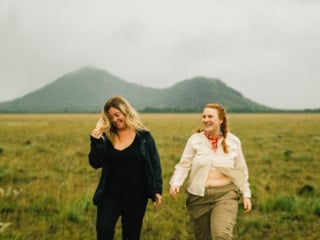I just got home from 10 days in Guyana and everyone keeps asking me how it was. I can’t stop smiling as I share story after story with a big, probably slightly obnoxious, grin on my face. I’ve been all over the world, but Guyana genuinely surprised me in the best way possible.
When people now ask me, “What’s your favorite country?” Guyana is officially in the running.
From the raw beauty of untapped jungle to rum-fueled nights under the stars, here are my favorite things to do in Guyana. This travel guide will help you plan an unforgettable adventure filled with wildlife, culture, and magic.
Must-See Natural Wonders in Guyana
More than 80% of Guyana is covered in pristine rainforest, and the natural wonders here are what make this country shine. If you’re planning your first trip, start by building your itinerary around these highlights.
1. Kaieteur Falls and Orinduik Falls: Waterfall Day Trips from Georgetown
Kaieteur Falls is the tallest single-drop waterfall by volume in the world, and yes, it’s as jaw-dropping as it sounds. What makes this day trip even more fun is the flight. Since there are no roads connecting Georgetown to the falls, you hop in a tiny bush plane and fly over untouched jungle.
I was lucky (or cursed?) with the co-pilot seat. Let’s just say I kept my hands firmly in my lap.
After landing, we hiked a short trail to Kaieteur and were met with a scene that looked like Jurassic Park meets Norwegian fjords. It was green, dramatic, and completely unforgettable. I understand why this is one of the top Guyana tourist attractions.
Later, we continued to Orinduik Falls near the Brazilian border. These falls are smaller, but you can actually swim in them. We cooled off, played in the water, and made core memories. Just bring grippy sandals like Tevas, the rocks are slippery.
2. Exploring the Rupununi Savannah
The Rupununi region in southwestern Guyana feels like a country all its own. Locals will even tell you, “We’re not Guyanese, we’re Rupununi.” This wild landscape of savannas, forests, and rivers is home to rich biodiversity and Indigenous cultures.
Travel to Surama: Meet Uncle Morris and Experience Makushi Life
We started our Rupununi journey in Surama, welcomed by Uncle Morris, a Makushi elder. We foraged for medicinal plants like mukuru, ate a traditional meal under the trees, and were introduced to life in the Interior. It was the perfect way to ground our journey.
Saddle Mountain Ranch: Traditional Ranching and Wildlife
After a swim at a local watering hole, we arrived at Saddle Mountain Ranch and were immediately greeted with home-cooked food and kind hearts. Dishes featured cassava, beans, and meats in cassareep sauce. I still dream about that dinner.
The next morning, we woke before sunrise for a Giant Anteater safari. I was giddy watching that floppy, fuzzy creature gallop across the savanna as we sat in the back of the truck chasing after it.
Later, we rode horses and herded cattle. Others hiked while I swam in the creek again, because who turns down a dip in the savanna? We were visiting at the very start of the rainy season, so we ended our swim in the creek by running back in a rainstorm but that’s just half the fun of Guyana.
Wichabai Ranch: Stay Off-Grid and Learn About Conservation
Wichabai Ranch might be one of my favorite places I’ve ever stayed. It’s off-grid, peaceful, and deeply connected to nature. We hiked through bush trails, drank rum at night, and learned about conservation efforts from the South Rupununi Conservation Society.
The eco-lodges are beautiful, and you’ll fall in love with the community (and their adorable cats and dogs).
Katoonarib Village: Cassava Bread and Cultural Traditions
In Katoonarib, we got hands-on with daily life. We made cassava bread from scratch, tried our hand at archery, and learned basket weaving techniques passed down for generations. It was the kind of immersive cultural experience that stays with you.
@whimsysoul Would you sleep in this off grid hut? 😱 🇬🇾 I've been having the best week in the savannah and jungle of Guyana. Sleeping in remote huts like this with the windows thrown open at night and nothing but the sound of nature to lull you to sleep is magical. @Discover Guyana #guyana #hut #cabin #hotel #roomtour #offgrid #southamerica #outdoors #whimsysoul #guyanatiktok #discoverguyana #adventure ♬ original sound – Kara | whimsy soul
Discovering Guyana’s Rich Culture, History, and Haunting Past
Georgetown: Exploring the Capital
Back in Georgetown, you’ll find charming colonial buildings, friendly locals, and lively streets. It’s a perfect base for your trip and worth a few days of exploring.
Chef Delven’s Food Tour and Backyard Cafe
One of the absolute highlights of my time in Georgetown was Chef Delven’s food tour. This guided culinary journey through the city gives you a behind-the-scenes look (and taste) of Guyanese cuisine.
You’ll sample everything from pepper pot to fresh tropical fruit, and end the tour at his charming Backyard Cafe, where Chef Delven prepares a feast just for you using ingredients sourced from the market that morning.
It’s part food experience, part cultural immersion, and 100% delicious.
Stabroek Market: Dive Into Local Life
This bustling market is chaotic, colorful, and an essential stop. You can buy everything from street food to hammocks to spices. It’s the beating heart of the city.
National Museum of Guyana
Small but impactful, the National Museum offers insight into Guyana’s colonial past and Indigenous roots. It’s a great place to understand the country beyond the landscapes.
National Park: Visit the Manatees
One of the best free things to do in Georgetown? Visit the Guyana National Park and see the manatees lounging in the ponds. You can even pet the creatures there! YES, pet them!
In the USA, it’s illegal to pet manatees, but here in amongst the lily pads of the Guyana National Park, you can feed and pet their manatees. It’s one of the best free things to do in Guyana.
PS there are more manatees in the Botanical Gardens, too!
Jonestown: A Sobering Tour of a Historic Site
If you’re interested in Guyana’s complex history, a visit to the newly reopened Jonestown site in Port Kaituma offers powerful insight into the 1978 mass-murder suicide of the Peoples Temple community. Led by local guide Chris Persaud of Wanderlust Adventures GY, the tour takes visitors through what remains of the compound, now mostly reclaimed by jungle.
Alongside a local expert who visited the site shortly after the event, you’ll walk to the pavilion site memorial and learn about daily life in Jonestown, what led followers to relocate to Guyana, and how it all ended in tragedy.
It’s an emotional, essential experience that brings historical context to the headlines you may have heard. Afterward, guests are invited to the Port Kaituma market and local restaurants to support the nearby community. It’s heavy, but it matters.
Experiencing Guyana’s Unique Wildlife
Kanuku Mountains: A Birder’s Paradise
If you’re into birds, a week to explore Guyana will blow your mind. The Kanuku Mountains are home to hundreds of bird species, and even if you’re not a full-blown birder, it’s hard not to get excited when you see toucans flying overhead.
Rupununi Savannah: Capybaras and More
Wichabai Ranch also offers the chance to swim with capybaras, which might be one of the most unique things to do in Guyana. The region is also home to giant otters, jaguars, harpy eagles, black caiman, and monkeys.
This is honestly the only South American spot I know of where you can find domesticated capybara to swim with! Major travel inspiration right there.
Planning Your Guyana Adventure
Best Time to Visit Guyana
The dry season from September to April is ideal for travel, especially if you’re heading into the Interior or planning wildlife tours.
Getting Around Guyana
Internal Flights
Many destinations, like Kaieteur Falls and Lethem, require flights. Carriers like Air Services Limited or Trans Guyana Airways operate small regional planes.
Ground Transportation
Roads can be rough and remote. You’ll often need 4×4 vehicles to reach ranches or villages. This isn’t a place to rent a car, you’re far better off arranging transportation with local guides or your lodge to get around. While in Georgetown, use taxis.
River Transport
Some areas, like the Demerara River region, are only accessible by boat. Taking a river tour is both practical and scenic.
Where to Stay in Guyana
1. Georgetown Hotels
I stayed at the Aiden Hotel, which offered AC, filtered water, and great breakfasts, a solid home base in the city. Their beds are super comfy.
2. Rupununi Ranches
Staying at a ranch in Region 9 is one of the most memorable things to do in Guyana. Saddle Mountain and Wichabai Ranch are both incredible options for immersive, off-grid experiences.
We didn’t get a chance to visit the Iwokrama Canopy Walkway or their Atta Rainforest Lodge but I hear it’s wonderful!
What to Pack for Guyana
Guyana is in South America, just north of Brazil, so prepare for hot weather all year round with two major seasons: Dry and Rainy. .
Clothing Essentials
- Lightweight, breathable shirts (my favorite brand)
- Hiking pants
- Light dress for dinner
- Hiking boots
- Sandals for evenings (I like Teva)
- Swimsuit
- A good hat for hikes to protect your hair
- Rain jacket
- Extra socks since they get wet easily
Protection
- Insect repellent with 100% Deet
- Sunscreen
- Electrolytes for hot days
Field Gear
- Binoculars
- Camera with zoom lens
- Dry bag for river days
What Is Guyana Known For?
- Untouched nature and biodiversity
- Indigenous culture and traditions
- Epic adventure travel
- Hearty food and generous people
- Off-the-beaten-path experiences
- The haunting legacy of Jonestown and its lessons
FAQ About Visiting Guyana
Is Guyana safe for tourists?
Yes, Guyana is very safe for travelers, especially in rural areas and with local guides. Georgetown requires standard urban precautions, though at night i recommend not walking around alone.
When is the best time to visit Guyana?
The dry season, from September to April, is the best time to explore the rainforest, savannahs, and waterfalls with fewer weather disruptions. We visited at the end of April and started to get a few rainy days but it didn’t damper our fun.
Can you visit Jonestown in Guyana?
Yes. As of 2025, the Jonestown site in Port Kaituma has reopened to the public. Guided tours offer deep insight into the history of the Peoples Temple.
What are the must-see natural attractions in Guyana?
Top sights include Kaieteur Falls, Orinduik Falls, the Rupununi Savannah, Kanuku Mountains, and eco-lodges like Wichabai Ranch.
Do I need a visa to visit Guyana?
US citizens don’t need a visa for stays under 90 days. However, always check the latest entry requirements before booking your trip.
Can you swim with capybaras in Guyana?
Yes! Wichabai Ranch in the Rupununi Savannah offers one of the only known spots in South America where you can swim with domesticated capybaras.
Got questions about planning your Guyana visit or want more travel tips? Drop them in the comments or DM me on Instagram @thewhimsysoul. Happy adventuring!

